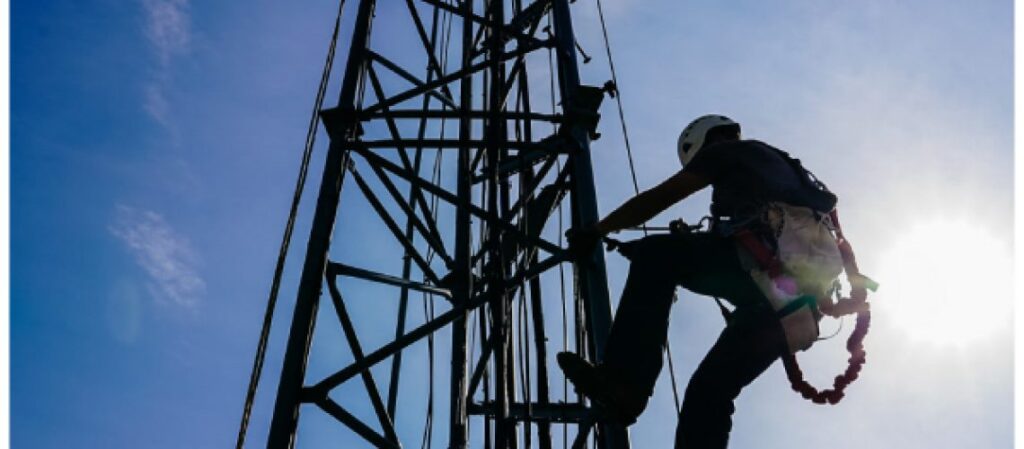Founded to provide electricity to rural Illinois, Illinois Electric Cooperative has a long history of working to improve the lives of its members. Since 1936, the cooperative has expanded its mission beyond electricity, becoming a key player in delivering broadband to rural communities. However, this journey has not been easy. The cooperative went through many other vendors and technologies as it searched for the right broadband solution.
Legacy FWA Broadband Challenges
Like many rural service providers, Illinois Electric faced immense difficulties in deploying broadband infrastructure. While legacy fixed wireless access (FWA) solutions promised high speeds, they consistently underperformed in real-world conditions. “We started in the early 2000s with wireless that could do maybe .5 Mbps of download speed,” said Matt Haverfield, Network Operations Manager for Illinois Electric Cooperative. From there, the cooperative cycled through several legacy wireless platforms. When the cooperative secured Connect America Fund (CAF) II funding, it tried a 3GPP system to see if performance could be improved.
“That platform promised 100/20 Mbps, but it couldn’t do it,” said Haverfield. “So, we replaced it with one of the top 3GPP manufacturers, thinking this would give us the performance we need.” However, when that system failed to live up to expectations, the cooperative knew it would have to try something completely different.
Overcoming Cost and Infrastructure Barriers
While fiber-to-the-home (FTTH) remains the gold standard for broadband performance, its deployment in rural areas has significant, well-known challenges. The high cost of laying fiber in sparsely populated areas, coupled with obstacles such as rugged terrain and permitting delays, can slow progress and strain budgets. Additionally, rural communities—often underserved or entirely unserved—require solutions that deliver immediate relief without compromising future scalability. “Fiber costs way too much in low-density applications,” said Haverfield. “It’s just not feasible to deploy at scale without a government subsidy.”
Unwilling to leave any of its members on the wrong side of the digital divide, Illinois Electric looked for a new solution and found Tarana.
G1: The Next Generation of FWA
G1’s innovative breakthroughs create an entirely new paradigm for building and growing fixed wireless access networks that make gigabit broadband possible where legacy fixed wireless would fail. This includes:
- Unmatched Interference Cancellation: G1’s interference and noise cancellation ensures reliable, high-speed connectivity even in crowded, noisy RF environments. Features like asynchronous burst interference (ABIC) reduce the impact of bursty interference, such as from nearby Wi-Fi transmitters. Less interference means more reliable, higher-speed connections.
- Superior Non-Line-of-Sight (NLoS) Performance: Rugged terrain and trees can block other wireless technologies, making links either unusable or very poorly performing. G1 overcomes this with fine-grain Tx and Rx digital beamforming, distributed massive MIMO at both ends of the link, and perfect multipath integration.
- Scalability and Speed: Cooperatives can deploy gigabit broadband at large scale in weeks, not months or years. High-speed connectivity is deployed faster—accelerating service and revenue timelines—bridging the digital divide quickly, efficiently, and affordably.
“The great thing about Tarana is that they do everything: from the subscriber, through the BN on the tower, to the management cloud. It makes operation and troubleshooting so much simpler,” said Haverfield. “Tarana just works while we’ve had problems with everyone else.”
ngFWA: A Clear Winner
With Tarana’s G1 ngFWA platform, Illinois Electric is delivering high-speed internet to its customers at a fraction of the cost of fiber or 3GPP wireless. “With our 3GPP solution, we were paying almost $100k a tower, and then there was the cost and complexity of the EPC. Tarana is much more efficient,” said Haverfield.
ngFWA + Fiber: A Powerful Combination
ngFWA represents groundbreaking technology that can quickly and cost-effectively deploy high-speed broadband. However, ngFWA is also a perfect complement for fiber deployments. With fiber and ngFWA, service providers can use the best technology for each application. The result is an optimized network that delivers fiber-class broadband regardless of the actual technology. From a subscriber’s point of view, there is no difference. Subscribers get fast, low-latency, high-speed internet regardless of the underlying equipment.
The Future of Rural Broadband Starts Here
Cooperatives like Illinois Electric use ngFWA to enhance coverage in hard-to-reach areas, accelerate revenue streams, optimize resource allocation, and provide flexibility, scalability, and cost-effectiveness within a simplified deployment architecture. With G1, Illinois Electric was able to achieve unmatched performance that includes:
- 10x – 16x throughput speed improvements.
- Simplified deployment without the need for costly EPCs.
- End-to-end management and easy troubleshooting.
- Rapid deployability in the hardest-to-reach areas.
“We’re still trying to find the limits of the Tarana solution,” said Haverfield. “With Tarana, we can deliver high-speed broadband to our customers that exceeds their expectations.”
By embracing Tarana’s G1 platform, Illinois Electric has rewritten the playbook on rural broadband, delivering high-performance connectivity to communities that need it most—quickly, efficiently, and affordably.
About Illinois Electric
Illinois Electric Cooperative was organized in May of 1936 to provide electric service to the surrounding rural areas. The first electric lines in the Cooperative’s territory were energized in 1938. The headquarters is centrally located in the heart of the service territory in Winchester, Illinois, serving members in the surrounding counties of Morgan, Pike, Scott, Greene, and Calhoun, with a few members located in outlying regions of Adams, Brown, Cass, Jersey, and Macoupin counties. Illinois Electric Cooperative supplies electricity and Internet service to about 14,000 accounts.
If you just can’t wait to learn more, check out our other blogs or some of our favorite customer links. Or reach out to us at info@taranawireless.com. We’d love to hear from you.
